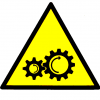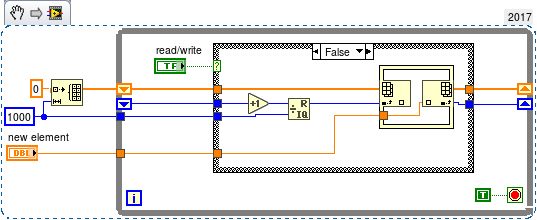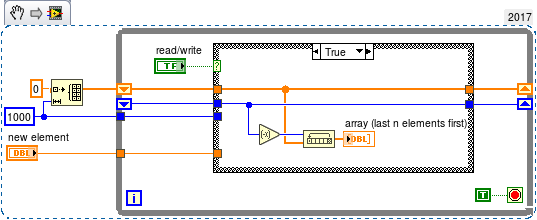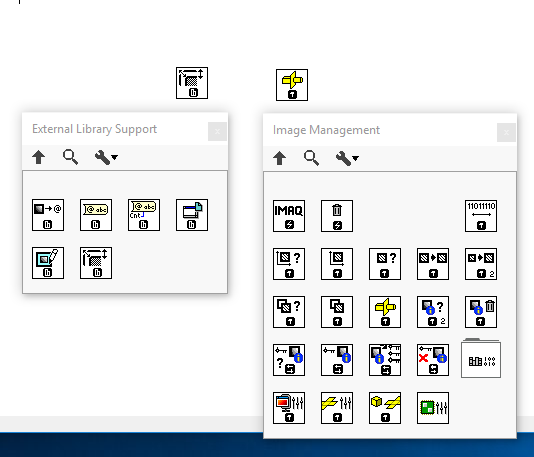-
Posts
583 -
Joined
-
Last visited
-
Days Won
26
Content Type
Profiles
Forums
Downloads
Gallery
Everything posted by ensegre
-
More out of curiosity than of hope: has anybody any idea why SVs are almost unsupported on linux? By almost I mean that controls and indicators cannot be bound to shared variables, and that shared variables cannot be programmatically created and looked up. I know that SVs hosted on windows can be accessed in linux LV using datasocket nodes, but that is all it gets. And it has been said that datasocket is despicable. What are the missing pieces that make SV windows-only? I didn't find much in the canonical places, so I posted a dumb zero-kudos attracting idea.
-
- shared variable
- ni-psp
-
(and 1 more)
Tagged with:
-
Dataflow.The small loop runs only after the big acquisition loop ends. You probably have no choice but to communicate the avi file reference and the writing status from one to the other via local variables. Or a channel wire perhaps.
-
Basic LV programming question. One way is with event frames. You should only open the AVI file when the boolean changes from false to true and close it when it reverts to false.
-
http://zone.ni.com/reference/en-XX/help/370281AD-01/imaqvision/imaq_avi2_create/ http://zone.ni.com/reference/en-XX/help/370281AD-01/imaqvision/imaq_avi2_get_codec_names/
-
I don't see a producer-consumer in your VI. That is e.g. two loops, enqueueing and dequeueing image references, or something equivalent. You create an AVI file at start because your program does so, you might want to do it rather only after the button is pressed. And I would handle that with an event structure and a shift register propagating the file reference from one iteration to the next. Maybe you'd want to check some LV learning resource first?
-
A producer-consumer architecture, with a queue of images to be saved by the consumer loop, is the first thing you should really try. Alternatively and asynchronously grabbing one image from each loop for either viewing or saving, like you do, wont bring you far. Also, rendering the preview image might be resource intensive and compete with saving, you may want to display only one every N images. Finally, AVI could involve compression codecs, which can also be computationally demanding; to maintain a given frame rate you might have to stream uncompressed images, or to choose a less demanding codec, to reduce the image size.
-
you mean "String ranges: A range of a..c includes all strings beginning with a or b, but not c." which is known and stated? I read time ago a discussion about its rationale, but I don't remember where.
-
Different packages have different names. For instance Matlab has log and log10, LV formula and mathscript has ln, lnp1, log10 and log2. Imho you shouldn't change. You're releasing a package which is essentially muparser, and can even work happily with the unpatched muparser, so users could expect a high compatibility with it. Besides you're already at version 1.0. You're going to irk your user basis...
- 172 replies
-
- 1
-

-
How often you write new elements versus how often you have to read the whole array may also skew the preference given to one scheme. For example, if you write often a single element, just replacing it in place at (i mod N) may be efficient, whereas the readout which involves an array copy may be left with a more expensive solution. This is my go at it, not double checked, may be bugged.
-
Yes, to be fair I also have to admit that I used the GrabbeX in a setup with a single analog camera. An old setup to which I don't have access anymore for further checks. But these kind of converters are cheap so the risk in trying out a few may be low.
-
I've had good experiences (in the past, who uses TV cameras nowadays anyway?) with this analog->USB converter (link to a random eshop, no recommenadation). You then see the camera as IMAQdx like any vanilla webcam.
-
hm, no, I haven't yet had to upgrade any installation with vision to 2017.
-
I have a fresh 2017 on windows with vision and both VIs are in. Are you sure it is not an installation problem?
-
interesting idea. With some modifications like firing only the first time the FP is Standard or Maximized it should do what the OP is asking, and work for clones too. I presume that the cost of dropping it in every BD is minimal and could automated with scripting. Going a step further, such a drop-in could even hold the opening of the FP till it receives a notification in return, that the cosmetic job has been done by the actor which handled it.
-
Maybe not the smartest or more efficient answer. I would think at this: I'd run it periodically and generate a notification for every one of the newly open FPs. Names are identificative as long as no two VI can be in memory with the same name. Now there is the problem of clones, as I was asking here. One suggestion given in the thread points to the fact that the naming scheme of clones is known, only their number a priori is not.
-
Appreciated, thanks.
- 172 replies
-

VI server method to get refs of all clones?
ensegre replied to ensegre's topic in Application Design & Architecture
I see... Thanks both. -
I thought there was an easy, built in, VI server way of doing the following, but I haven't found one. Am I missing something trivial? So I have one application instance, spawning clones of a certain VI. I would like to get an array of the VI refs of all of these clones. I thought I could via some property like Application:All VIs in memory, but I haven't found any suitable. All VIs in memory gets only the base VI names. Missing that, I resort to register all my clones in a FGV as they startup, , and consult the FGV at will. Is there a more linear way? RegisterMovieWriters.vi I also note that I have to associate each VI ref with its clone name in the FGV, otherwise plain refs to different clones match as equal in lookups.
-
quick test, seems to work ok in my project on windows. Noob question about vipm: I can't install the vip on linux, as it was build with vipm-2017. How can I build the package from the sources with vipm-2014, which is the latest available for linux (jki said no schedule for a new release). "Open Package Build Spec" LV_muParser.vipb gives me a blunt "VI Package Builder was unable to open the build spec due to an error".
- 172 replies
-
No big deal, they are all very simple. The full message from mupGetErrorMsg() is already more informative, beyond that I can't imagine. See my go at it: mupCheckError.vi
- 172 replies
-
- 1
-

-
Indeed the other day I spent some time debugging an elusive crash-LV-second-time-button-is-clicked, which turned out nothing but a mistake attempting to destroy a stale muparser handle. A trivial issue: some of your VIs are broken because of the input varValue moved to position 3 of the conpane on Eval_SglVar_SglRef, I imagine a last minute change for uniformity.
- 172 replies
-
I see. Yes, the difference with e.g. a camera is that you can think at scenari where multiple access could make sense. Discipline would be required nevertheless to handle races, even if a lock mechanism is built in, for instance I wouldn't see the sense of updating variables and evaluating completely asynchronously.
- 172 replies
-
well, a disciplined programmer shouldn't do that. I think the same could be said for anything else living on some other handle wire. Camera sessions i.e....
- 172 replies







